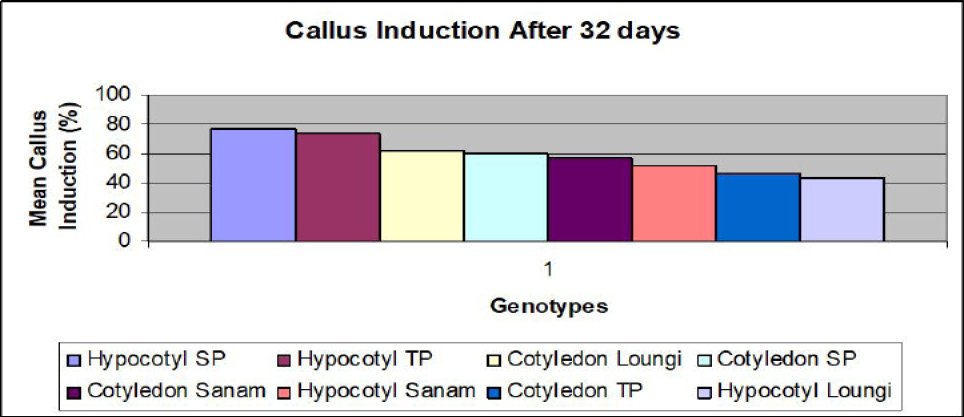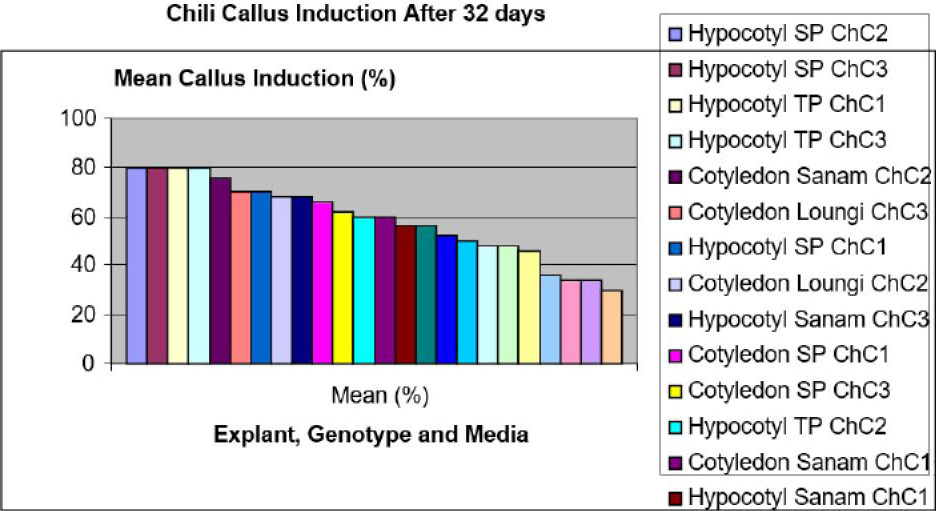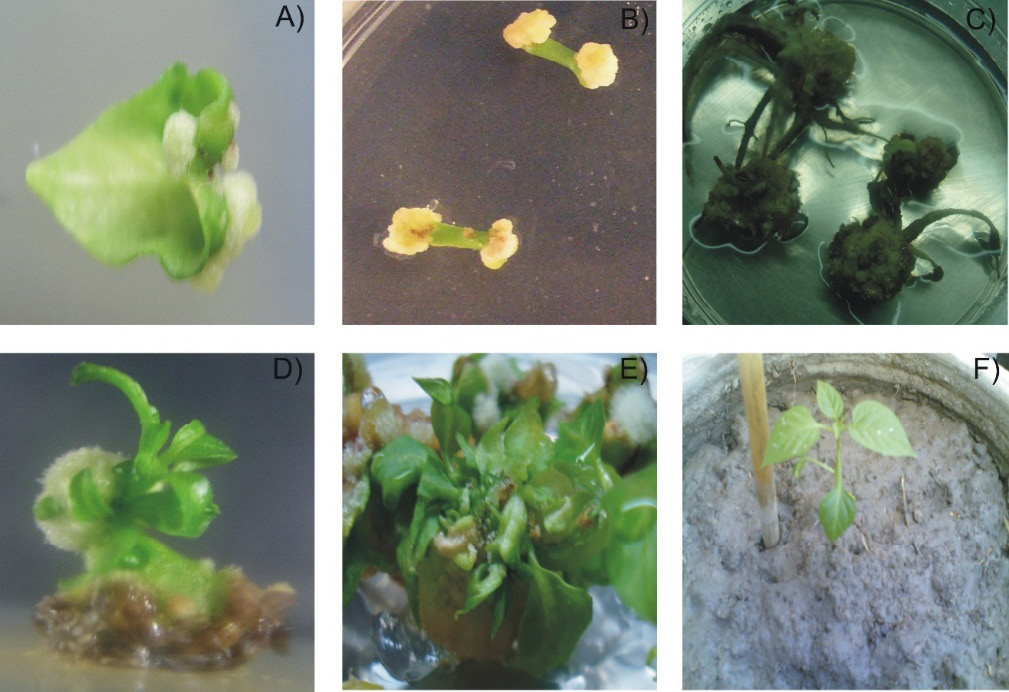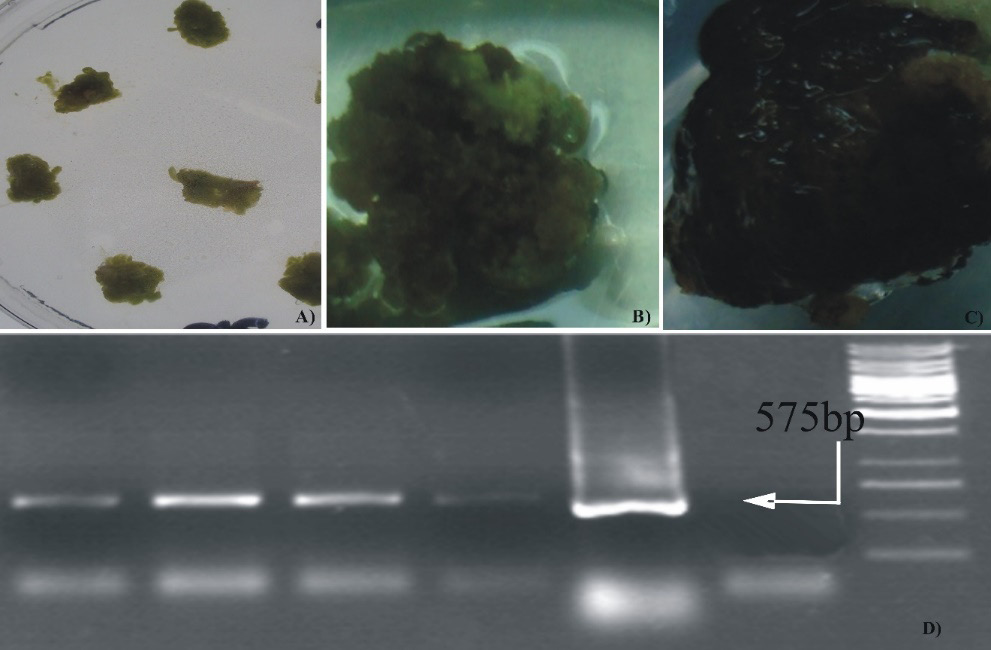Response of Different (Capsicum annuum L) Genotypes for Callus Induction, Plant Regeneration and Plant Transformation
Response of Different (Capsicum annuum L) Genotypes for Callus Induction, Plant Regeneration and Plant Transformation
Muhammad Shafiq1, Tehseen Ashraf2*, Sehrish Mushtaq1, Naveeda Anjum3, Muhammad Asim4, Muhammad Aqeel Feroze3, Malik Abdul Rehman4 and Marja Aziz3
Effect of four genotype (SP, TP, Sanam, and Loungi) on chili callus induction.
Interaction of genotype and explants (hypocotyl and cotyledon) response on chili callus induction.
Combination of genotype, explants and callus induction medium response on chili callus induction.
Effect of four genotype (SP, TP, Sanam, and Loungi) on chili plant regeneration.
Effect of combination of genotype, explant and shoot regeneration medium on plant regeneration from chili calli.
Different step in chili tissue culture, A) Callus induction from cotyledon explants, B) Callus induction from hypocotyl explants, C) Rhizogenic callus, D) Shoot regeneration, E) Multiple shoot induction, F) regenerated plant.
Plant transformation in chilies and transgene analysis. A, B and C) Chili callus after inoculation with A. tumefaciens LBA4404 35S GFP/pFGC, D) PCR confirmation of the transgene using specific primers of the transgene in calli.














